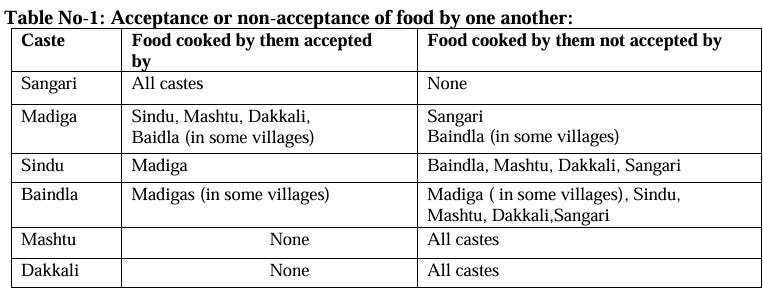I finished reading ఇన్క్రెడిబుల్ గాడెస్ [Incredible Goddess] this week. Here is my full review in Telugu: Goodreads.
There are both push and pull factors to explain caste oppression. Analysis on push factors is widely done. These include discrimination, bonded labor, untouchability, and exploitation of various kinds. In Incredible Goddess, the author explored internal pull factors. One major pull factor he explored is the brainwashing that the oppressed castes have undergone, which makes them believe that the current situation is part of their “karma.”
Another factor is the rivalry between the oppressed castes. The author made a strong comparison of this rivalry to stray dogs fighting for leftover food. The oppressed castes fight among themselves today for reservations, sub-categorization, etc., and the savarnas exploit this rivalry. The story presented this factor well, especially in the way they abuse each other.
I felt like I was in a social studies class when the పాత తెలుగు పుస్తకాలు [Old Telugu Books] group started discussing this book. We keep hearing and reading the words “Dalit,” “oppressed caste,” and “lower caste” in English media. But in stories, the authors have to get specific. The book and the later discussion led us to read more about the protagonist’s caste, Mala (మాల). Whenever he has to abuse his fellow caste member, he associates them, often sexually, with another Dalit caste, Madiga (మాదిగ). In the Telugu states together, they comprise ~88% of the Dalit community (~40+48).
They are generally kept out of the village. But I learned yesterday that there is a hierarchy here. Malas are kept a little out of the village (Malapalli). Madigas are further out (Madigapalli). The caste occupations could explain this hierarchy. Madigas do more of animal work (leather work), manual scavenging, etc. Malas do more of the village labor. So Malas treat Madigas as inferior and this is reflected in the casteist slurs in the book. I’ve read more of this inter-caste rivalry here: Mala-Madiga Rivalry
It doesn’t end there. There are 6 main categories within Madigas— priestly Sangari sub-caste to the mendicant Dakkali sub-caste. They practice untouchability within themselves. The caste system is fractal.
It made us wonder what are the stories that could brainwash millions of people over centuries to accept this system. I found a few stories here: History of Madigas. Apparently, the mythological ancestors of both the Mala and Madigas—Jambavantha and Chennayya—were involved in the death of the sacred cow Kamadhenu and so their descendants are paying the price. These are fatalistic stories, rooted in religion and superstition, that determine the destinies of people for no fault of theirs.
This discussion reminded me of an essay by K. Balagopal in which he argues how the caste system is responsible for the lack of innovation in modern India. Here is an excerpt. I’ll translate it to English.
To know about human anatomy, we have to dissect the dead bodies. But that work is considered dirty and impure and so prohibited for the Brahmins. The Madigas and Chandalas, who have no such prohibition, were denied curiosity and knowledge to conduct scientific experimentation by the caste system. This is why, Indian medical science, which was once better than the western medical scienceb, degraded gradually and now remains as Ayurvedic tips.
Carl Sagan also has something to say about this, and I’ll end with that.
That is what the scientist 𝐂𝐚𝐫𝐥 𝐒𝐚𝐠𝐚𝐧 argues from a civilizational point of view.
Ionians (Ancient Greece) were once famous for Science. They worked on astronomy, geometry, etc. But the advent of 𝐬𝐥𝐚𝐯𝐞𝐫𝐲 led to the decline of Science in Ionia. Scientific experimentation is a ‘dirty’ work done by hand. Once slavery came into existence, the slave-holders distanced themselves from ‘dirty’ hand work. And the slaves were not given any knowledge, opportunity and leisure to think or to do science.
𝐀𝐬 𝐚 𝐫𝐞𝐬𝐮𝐥𝐭 – 𝐧𝐨 𝐨𝐧𝐞 𝐝𝐢𝐝 𝐒𝐜𝐢𝐞𝐧𝐜𝐞.
The slaves did slavery; The slave-holders did armchair philosophy.
Carl Sagan argues that the decline of Science in the Indian, Aztec, Mayan and several civilisations is also for a similar reason. The hierarchical organisations in these societies distanced limbs from the head. In fact, the caste system literally delineates which caste came from the head and which caste came from the foot.
(The above excerpt is from my old blog—Body-mind coordination.)
Here’s a social science research idea: find the distances between Malapallis and Madigapallis to the village center and plot them. The hypothesis is that we could see caste system in that plot.
Also, I could be wrong. This understanding is based on internet reading and a few conversations. Please correct me or add more nuance if you are aware of it.
We are starting the first reading session of the Model Thinker reading group this Sunday. Here is the reading list of the week: Week 32/2025 Model Thinker Reading List. I described more about this group in my previous letter: Weekly Letter 31/2025
A few nice things to read/watch:
Rahul Gandhi’s presentation on faulty voters is brilliant.
Another misleading thumbnail on AI, but it’s a nice, entertaining discussion on the importance of science communication and scientific research, which is under Trump’s axe.




The association of lack of scientific temper to caste is brilliant, a true eye opener.